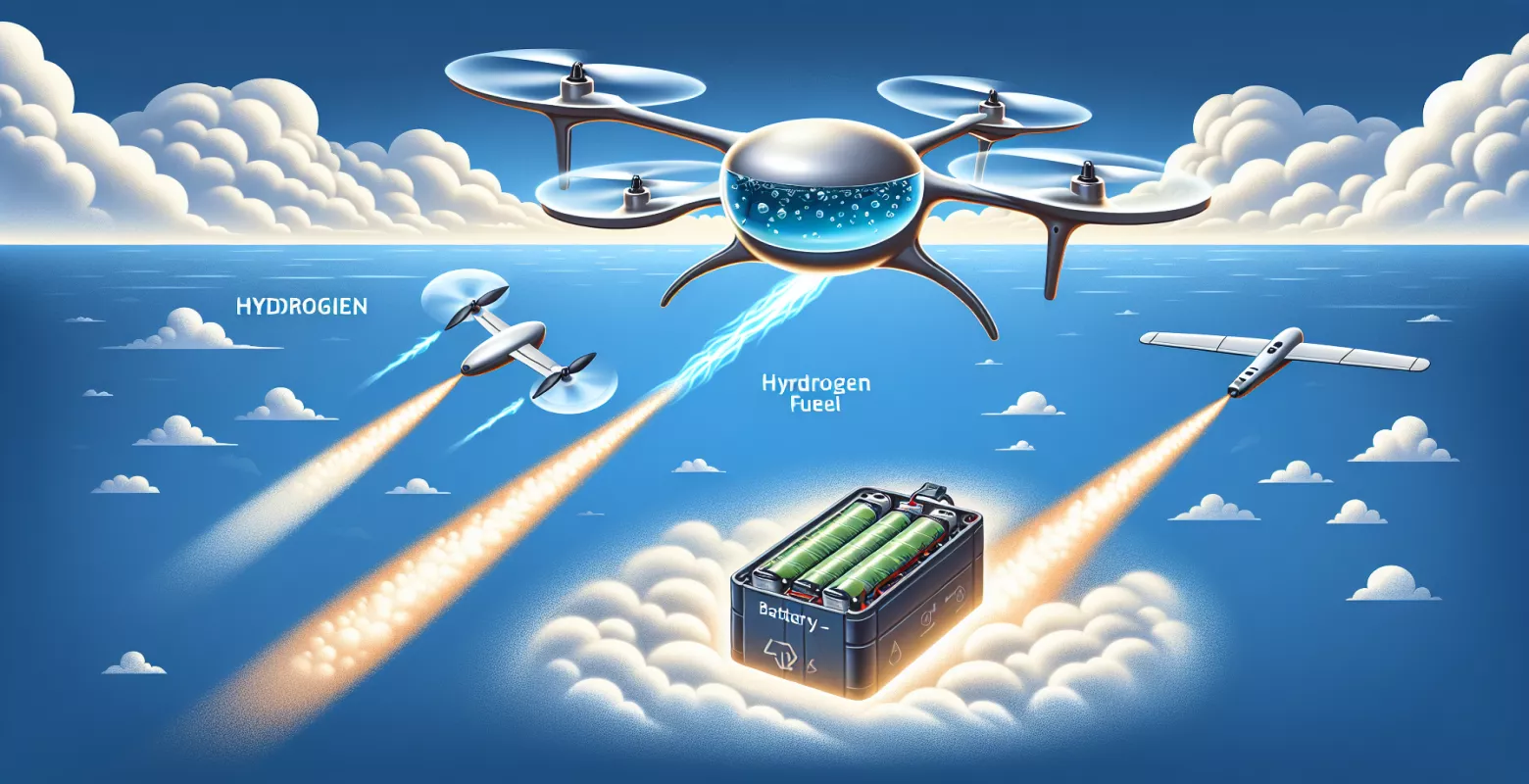Drone Power Technologies – Hydrogen or Electric?
Introduction
Modern drone power technologies play a crucial role in the development of this rapidly growing industry. The choice of a suitable power source significantly impacts the performance, range, and application of drones. Today, we will explore the two main power technologies: hydrogen and electric. Both of these technologies have unique features that can be decisive in specific applications. We will examine their advantages, challenges, and future prospects.
Hydrogen Technologies
Hydrogen power, based on fuel cells, is one of the promising technologies in the context of drones. Fuel cells generate energy through the reaction of hydrogen with oxygen, producing water as the only byproduct. This makes it an environmentally friendly technology that does not emit harmful substances into the atmosphere.
One of the main advantages of hydrogen technology is its high energy density. This means that hydrogen-powered drones can operate longer on a single refill compared to their electric counterparts. This enables longer missions, which is particularly important in commercial and military applications.
However, hydrogen technology also faces challenges. First and foremost, the infrastructure for the production and distribution of hydrogen is still limited. Additionally, storing hydrogen in liquid or compressed form requires specialized equipment, which can increase operational costs.
Electric Power
Electric drones use lithium-polymer (LiPo) batteries, which are currently the most popular power source in this category. LiPo batteries offer relatively high energy efficiency and are readily available on the market. Moreover, advances in battery technology, including research into new materials, lead to increased energy capacity and reduced charging times.
The main advantage of electric power is its simplicity and availability. Batteries are easy to handle and can be charged almost anywhere, making them an ideal choice for many individual and commercial users. Furthermore, the absence of exhaust emissions makes electric drones environmentally friendly.
However, limited battery capacity and long charging times can be problematic for long-term operations. The solution may be interchangeable batteries, which allow for rapid resumption of flight, but this, in turn, increases the need to have more batteries on hand.
Future Prospects
Both technologies have their place in the market and can coexist, complementing each other in different applications. Hydrogen applications may dominate long-distance and demanding missions, while electric drones may be preferred in shorter and less demanding operations.
Innovations in energy storage and the development of hydrogen infrastructure may lead to wider adoption of hydrogen technology in the future. Meanwhile, advances in battery technology may accelerate the adoption of electric drones.
Conclusion
Drone power technologies are a key element in their development and application. The choice between hydrogen and electric power sources depends on specific needs and applications. Both solutions offer unique benefits and challenges. Regardless of the chosen direction, it is important to continue research and development to meet the growing market demands. We encourage further exploration and monitoring of innovations in this dynamic field.






Number of comments: 0